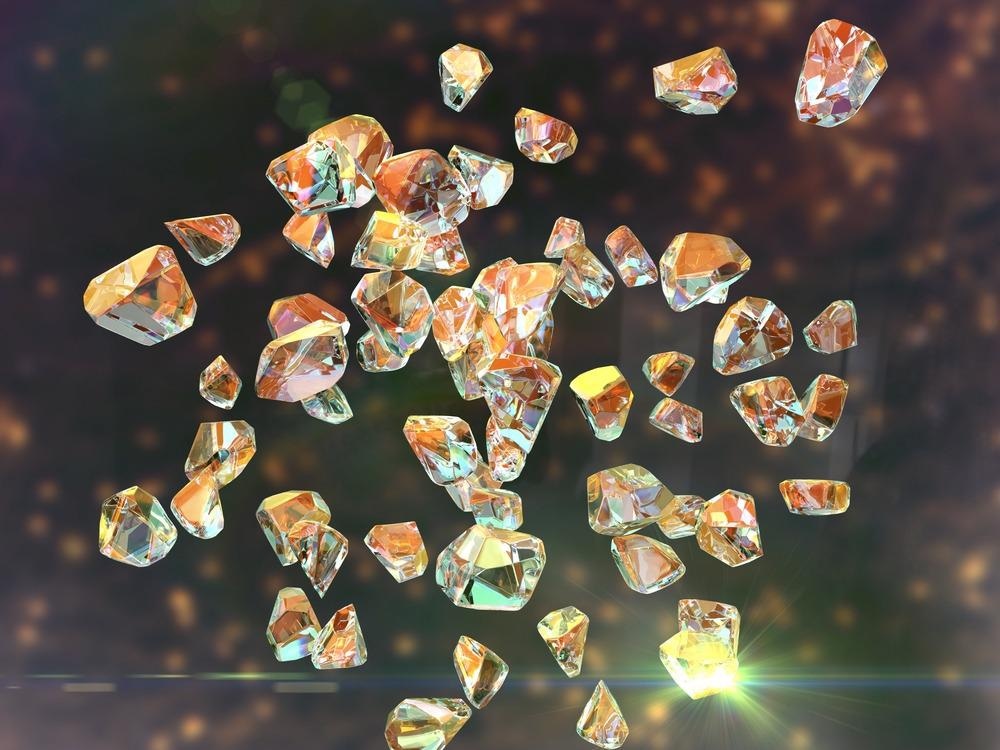A recent article published in the journal Biomaterials summarized aggregation-induced emission (AIE)-active materials which are promising phototheranostic and bioimaging agents. The present article discusses the importance of AIE-active nanocomposites and their biomedical applications.

Study: Aggregation-induced emission (AIE)-Based nanocomposites for intracellular biological process monitoring and photodynamic therapy. Image Credit: Kateryna Kon/Shutterstock.com
Photoluminescence imaging (PLI) is a visualization technique performed through a non-invasive approach. It is extensively used in biological applications for early disease diagnosis and to monitor intracellular processes. Combining photodynamic therapy (PDT) with PLI can have an advantage in phototheranostics technology.
PLI in PDT
Early detection and precise treatment of fatal diseases like malignant tumors can improve clinical treatment and consequent survival rates. Among various diagnostic technologies, PLI is noninvasive, highly sensitive, has an excellent temporal and spatial resolution, and shows a rapid response. PLI can provide information on physiological and pathological conditions of disease for their early diagnosis and treatment. Combining PLI with therapeutics helps in image-guided theragnostic to achieve precise treatment.
PDT is a typical phototheranostics technology that has received considerable attention. PDT relies on nontoxic photosensitizers (PSs), light, and endogenous molecular oxygen for treating cancer. Thus, it is more advantageous over traditional methods such as radiotherapy, chemotherapy, and surgery.
PDT’s phototheranostic effects are induced by PSs through photon absorption. The excited PS undergoes radiative decay and relaxes to the ground state (So), and the fluorescence emitted in the process is used for PLI-guided therapy. Another way the excited PS undergoes radiative decay is by preliminary de-excitation to triplet state (T1) through intersystem crossing (ISC) and subsequently to So state through phosphorescence emission.
PLI-guided PDT requires suitable advanced luminophores. To this end, AIE-active luminophores (AIEgens) emerged as promising luminophores in the recent past. AIEgens contain propeller-like structures which are non-fluorescent or weakly fluorescent in the solution state. However, AIEgens in aggregated forms can exhibit bright fluorescence emission with emission wavelength extension from ultraviolet (UV) to near infrared (NIR). Besides, some AIEgens in solid-state can have luminescent quantum yield (QY) up to 100%.
Although aggregated AIEgens have good optical properties for PDT applications, their biological applications are due to hydrophobicity. Hence, the primary modification to be made to AIEgens is to enhance their hydrophilicity through integrating hydrophilic functional groups. Additionally, it is also necessary to increase the biocompatibility of AIEgens.
AIEgen-based Nanocomposites
AIEgens encapsulation within biocompatible macromolecule matrices to form nanocomposites makes them suitable for biological imaging applications. This encapsulation provides AIEgens with good water-solubility, stability, and biocompatibility. Moreover, the aggregation of AIEgens into a confined space of nanocomposites results in improved photosensitization and luminescence. Thus, further functionalization of AIEgens can help achieve desired properties suitable for therapeutic and bioimaging applications.
Polyethylene glycol (PEG), 2-azepane ethyl methacrylate (PAEMA), and poly(2-methacryloyloxyethyl phosphorylcholine) (PMPC) are a few biocompatible polymers applied as matrix materials to prepare biocompatible polymer-based AIEgen nanocomposites. These biocompatible polymers reduce immunogenicity and avoid the elimination of the reticuloendothelial system.
Although AIEgen is combined with polymer matrices either through chemical bonding or physical encapsulation to form nanocomposites, the hydrophilic and hydrophobic interactions between AIEgens and polymers in physical encapsulation make it a more efficient strategy. Additionally, the AIEgen-polymer nanoparticles show advantages such as bright emission, facile surface functionalization, good biocompatibility, and tumor-targeting ability in image-guided PDT and bioimaging. AIEgen-polymer nanoparticles show disadvantages, like unpredictable morphology and size distribution, despite the advantages.
Since supramolecular macrocycle-based host-guest systems have received considerable attention due to their stimuli responsiveness, unique molecular recognition, self-assembly ability, good biocompatibility, and strong loading capability.
Thus, introducing supramolecular macrocycle into AIE-active systems can be advantageous to AIEgens for imaging-guided PDT and bioimaging applications. Macrocycles including pillar[n]arenes, cyclodextrins, cucurbit[n]urils, calix[n]arenes were used to prepare AIEgen-macrocycle nanocomposites. Generally, macrocycles encapsulate the AIEgens in their cavity and subsequently undergo self-assembly to form nanocomposites.
Proteins are biomaterial with applications in therapy, bioimaging, and drug discovery. Hence, protein-engineered AIEgens exhibit excellent properties for tumor therapy and bioimaging. The noncovalent interactions, such as electrostatic and hydrophobic interactions, existing between AIEgens and proteins provide stability to AIEgen-protein nanocomposites. Albumin and protein cages are commonly used proteins in AIEgen-protein nanocomposites. The targetability of AIEgen-protein nanocomposites needs further improvement for their in vivo application.
Conclusion
In conclusion, AIE-active nanocomposites overcame the shortcomings of conventional aggregation-caused quenched (ACQ)-active imaging agents or PSs and became a robust tool for PDT and PLI applications. Owing to the biocompatible functional components of AIE-active nanocomposites, they show enhanced emissions for the PDT and PLI effects. Despite significant progress of AIE-active nanocomposites in PLI and image-guided PDT, unsolved problems and challenges persist, calling for further investigations.
Most of the current nanocomposite-encapsulated AIEgens are visible absorption/NIR emission or NIR absorption/visible emission, suggesting that the field is at the preliminary stage and practically unexplored for their in vivo applications for NIR absorption/emission. Moreover, biocompatible functional components are critical for AIE-active nanocomposite activity, suggesting the need for an additional functionalization step. The noncovalent interactions that form AIE-active nanocomposites have low bond energy resulting in structural destruction before reaching the target site.
Reference
Lin, X., Li, W., Wen, Y., Su, L., Zhang, X. (2022) Aggregation-induced emission (AIE)-Based nanocomposites for intracellular biological process monitoring and photodynamic therapy, Biomaterials,.https://doi.org/10.1016/j.biomaterials.2022.121603
Disclaimer: The views expressed here are those of the author expressed in their private capacity and do not necessarily represent the views of AZoM.com Limited T/A AZoNetwork the owner and operator of this website. This disclaimer forms part of the Terms and conditions of use of this website.